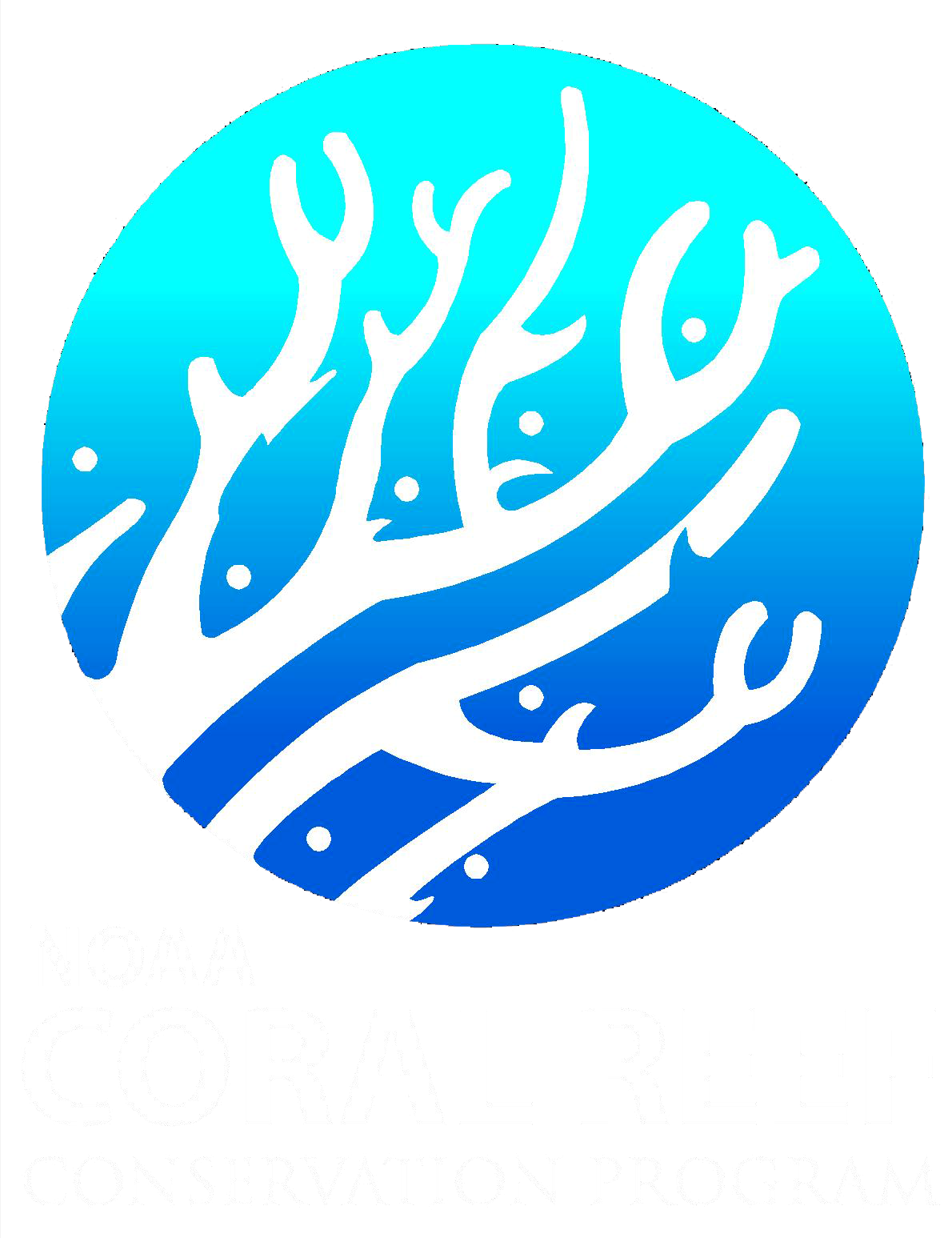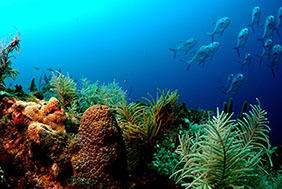-
Home
-
Data & Publications
-
Regional Portals
- About Regional Portals
- Florida
- Navassa Island
- Puerto Rico
- Flower Garden Banks
- U.S. Virgin Islands
- American Samoa
- Commonwealth of the Northern Mariana Islands
- Federated States of Micronesia
- Guam
- Main Hawaiian Islands
- Republic of the Marshall Islands
- Northwestern Hawaiian Islands
- Republic of Palau
- Pacific Remote Island Areas
-
CRCP Activities
- Glossary
New Tools Adopted for United States Coral Reef Task Force Watershed Partnership Initiative: Programmatic Checklist and Priority Ecosystem Indicators

The Watershed Partnership Initiative (WPI) of the U.S. Coral Reef Task Force (USCRTF) selected three watersheds (Guanica, Puerto Rico; West Maui, Hawaii; and Faga’alu, American Samoa) as priority sites where local and federal agency resources are addressing land-based sources of pollution in watersheds located upstream of priority coral reef areas. Specific language to evaluate the programmatic, ecological and social/community engagement success of the partnerships was included in Resolution 28.1 which codified the WPI. Specifically, the resolution states that in support of the WPI, the USCRTF will, “Evaluate the success of this partnership to ensure that the resources contributed are being applied effectively and are having the intended impact on watershed management, water quality issues impacting coral reef ecosystems, and building an informed and engaged community.” In response, the Watershed Working Group of the USCRTF sought to develop tools for managers of the WPI sites to assist them with tracking progress of implementing their watershed management plans and documenting the efficacy of the management interventions taken to reduce land-based sources of pollution originating from the priority watersheds. Two new tools are now available and they are described below.
USCRTF Watershed Partnership Initiative Priority Ecosystem Indicators

The purpose of this document is to provide coastal managers, coral reef managers, and watershed coordinators faced with modest budgets and technical expertise with a suite of recommended ecological indicators and measurements to include in their watershed-specific monitoring plans to help determine the efficacy and evaluate the success of management efforts to reduce land-based sources of pollution. With these metrics as a guide, the USCRTF intends to support the collection of ecological data from the watersheds and in adjacent coastal waters to document any physical, chemical, or biological changes due to management actions or interventions taken to reduce known stressors in the watershed.
Citation:
S. Holst Rice, P. Bradley, H. Slay, W. Wiltse, D. Polhemus, C. Storlazzi, T. Montgomery, P. Sturm, R. Viqueira, T. Callender, M. Curtis, and J. Dean. 2016. United States Coral Reef Task Force Watershed Partnership Initiative: Priority Ecosystem Indicators. Washington, DC. 56pp.
USCRTF Watershed Partnership Initiative Programmatic Checklist
This checklist is for watershed coordinators and is intended to help them assess the status of the institutional and stakeholder support for the watershed partnership sites, and determine whether agency resources and support are adequate for the successful implementation of a ridge to reef watershed management plan. Each year, the watershed coordinators will update the checklist to show progress and identify any issues that may impede the implementation of their ridge to reef watershed management plans. This tool was developed to be broadly applicable and can be used for priority sites identified by the USCRTF or any other coral reef watershed.
Citation:
S. Holst Rice, P. Bradley, H. Slay, W. Wiltse, D. Polhemus, C. Storlazzi, T. Montgomery, P. Sturm, R. Viqueira, T. Callender, M. Curtis, and J. Dean. 2015. United States Coral Reef Task Force Watershed Partnership Initiative: Programmatic Checklist. Washington, DC. 6pp.


